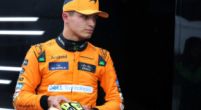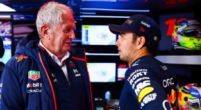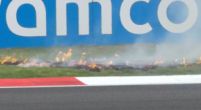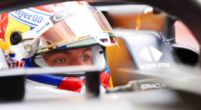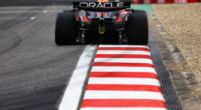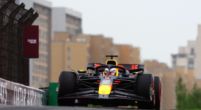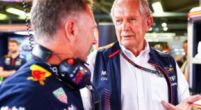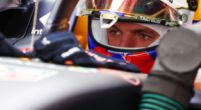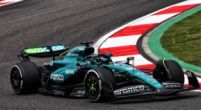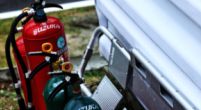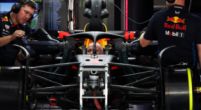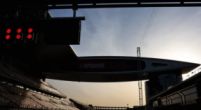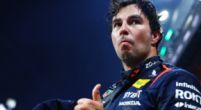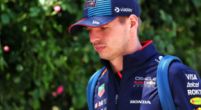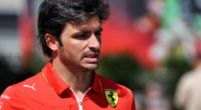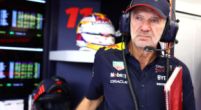Column

Turkish GP Analysis | Did Mercedes make the right choice to pit Lewis Hamilton?
Lewis Hamilton's team radio conversations with Peter Bonnington will be one of the most well-remembered parts of the 2021 Turkish Grand Prix. Mercedes demonstrated real signs of feeling the pressure in this World Championship duel against Max Verstappen and Red Bull Racing. Mercedes called Hamilton into the pits with just eight laps remaining. When the Brit realised he lost places to Charles Leclerc and Sergio Perez, the airwaves turned blue.
In Hamilton's mind, Mercedes had thrown away a third-place podium position which would've put him just one point behind Verstappen in the World Championship. Pretty much the ultimate case of damage limitation from Hamilton's ten-place grid penalty as a result of taking a fourth internal combustion engine (ICE). In the end, Hamilton came home in fifth-place and now sees a six-point deficit to Verstappen with just six races remaining on the schedule.
The decision
Remarkably, Hamilton had kept the same set of tyres on from lap one until his late pitstop. The intermediate tyres were practically a pair of slick tyres by this point and were starting to struggle. All other drivers, except Esteban Ocon, opted for a new set of intermediate tyres as the circuit struggled to dry in the second half of the race despite little rain.
And those new tyres proved to be extremely helpful. When Charles Leclerc led the race, he and Ferrari thought about going to the end of the race on the same set of tyres, but they decided to pit a couple of laps earlier than Hamilton did. On his first full lap, Leclerc went 1.132 seconds quicker than Hamilton and this is probably what concerned the Mercedes strategists the most. At that point, Leclerc had an 11.960 gap to Hamilton, and that would've closed down to just 1.772 seconds had the times remained exactly the same.
Of course, nothing remains the same for long in Formula 1 and those exact lap times wouldn't have been replicated. In all likelihood, Hamilton's tyres would've continued to fade and Leclerc possibility could've got stronger after coming through the initial overheating period. It's fair to say that had Hamilton stayed out, these two drivers would have engaged in a battle over the final couple of laps. With the state of Hamilton's tyres, it's unlikely he'd have been able to put up much of a fight. It's extremely likely that Leclerc would've passed Hamilton anyway.
Red Bull Racing's Sergio Perez had a gap of 13.126 seconds to Hamilton prior to the final Mercedes pitstop. In the four laps before Hamilton's pitstop, Perez was on average seven-tenths a lap quicker than Hamilton. But given Perez stopped earlier, he was in the overheating phase of the intermediate tyre at this point. The Mexican was rapid in the final ten laps of the Grand Prix. On lap 52 of the race, Perez set a lap time that was 3.182 seconds faster than Leclerc, and then Perez went purple on lap 53.
Formula 1 isn't completed on data alone. Human error plays a role as well as other external factors such as weather and reliability issues. But it's highly likely Perez would've got past Hamilton had he stayed out. All the data points to a Perez overtake. This would've put Hamilton in P5 anyway.
Risk v Reward
Given that the data suggests P5 for Hamilton was likely, Mercedes opted to pit the seven-time World Champion. The risk of stretching the intermediate tyres those extra eight laps wasn't worth it. We've already seen this season a couple of tyre blowouts throwing cars into the wall. And whilst safety issues remain the priority here, this would've given Verstappen a massive lead in the World Championship, and put Hamilton's new ICE at high risk of damage and therefore another grid penalty later down the line.
Had they left it another lap, Pierre Gasly would've got past Hamilton in the pit lane. And therefore a worse result would've followed. Speaking of Pierre Gasly, the Frenchman himself was lapping an average 1.045 seconds faster than Hamilton prior to his pitstop. With a 24.5 second advantage on lap 49, it's possible that Hamilton would've been able to stay ahead of Gasly.
The Alpine car and the Mercedes car are completely different for obvious reasons. The W12 is by far the stronger car, as the World Championship suggests. Ocon's lap times had reduced from 1:34/1:35s in the middle of the race to 1:37s in the final quarter. And the French driver even had a 1:39.5 right at the end. Given he was the only driver who stayed on the same tyre from start to finish, it's clear his intermediates dropped off the Pirelli cliff in the final five laps. Had the same happened to Hamilton, he would've been in danger of Gasly and Lando Norris being able to make the overtake.
The right/wrong decision
Hindsight says Hamilton should've pitted at a similar time to everyone else and then pushed on from there, who knows what he might've been able to achieve. But that decision had been made and now Mercedes had to react to what was in front of them. Even though it seems odd, Mercedes made the correct decision to pit. The outcome could've been a lot worse for Hamilton without a new set of tyres. Hamilton used some spicy language on the radio, and then no language at all. But Hamilton will look at the data himself after the race.
That being said, the Mercedes strategy team have made some interesting calls this year. With both World Championships going down to the wire, it's vital they need to make improvements in this area long before Abu Dhabi.



